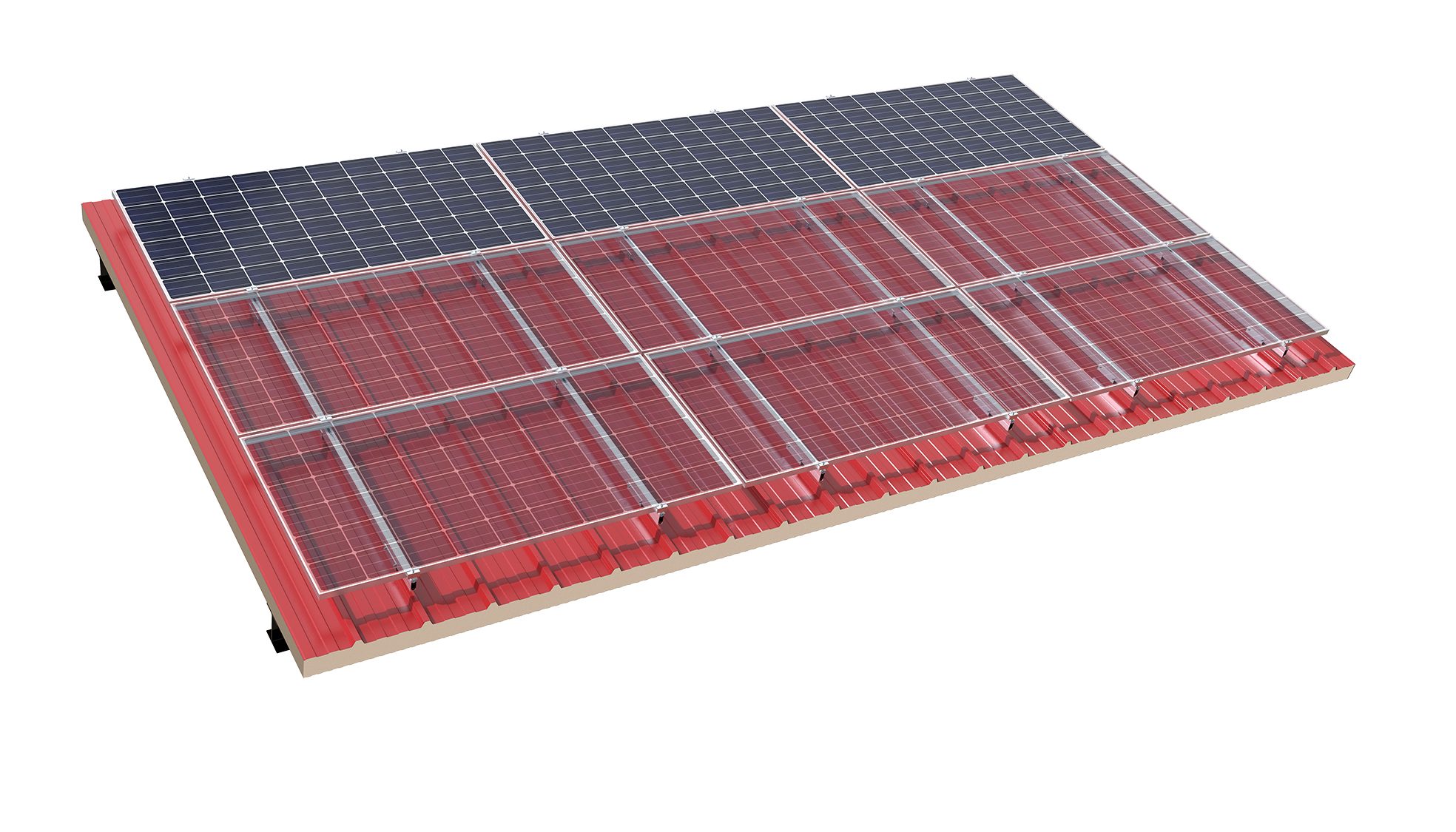AEROCOMPACT launches patented support system for PV installations
Satteins, Austria, Sept. 9, 2021. The Austrian expert in PV mounting solutions AEROCOMPACT has developed a new support system for solar power systems on sandwich panels. The patented racking system is the first solution on the market that neither stresses nor damages the panels as it transfers all compressive and tensile forces directly into the roof’s substructure. At the heart of the racking solution from the COMPACT METAL modular system is the 5.8-meter TR74 support rail, which has been available since August.
With its new racking solution, AEROCOMPACT has solved an industry-wide problem: Until now, installers mostly attached PV systems to sandwich panels by screwing the substructure directly to the top layer of the panels with thin sheet metal screws. However, the interaction of forces caused by snow and wind can permanently damage the top layer in the long run, leading to leaks, detachment of the outer shell and a resulting “static ambiguity.” Indeed, manufacturers of sandwich panels report large-scale damage to building roofs.
Thanks to AEROCOMPACT’s new support system, the rail does not rest directly on the roof, but is connected directly to the purlin below with self-drilling support screws. The PV substructure is supported entirely on it. Therefore, no compressive or tensile forces from wind or snow are introduced into the sandwich panels. “The span of the 5.8-meter long support rail is unique, and the introduction points can absorb very high forces,” explains Marco Rusch, Group Head of Corporate Communications at AEROCOMPACT.
Spacer sleeves and additional supports guarantee that the distance between the rail and the roof is maintained evenly, thus ensuring good rear ventilation. A pre-assembled sealing rubber prevents moisture from entering the raised beads. A patented static algorithm regulates the optimal distribution of the support points on the roof in the AEROCOMPACT planning software.
Panel manufacturers are enthusiastic
“Leading manufacturers of sandwich panels are enthusiastic about our construction design,” Rusch is pleased to report. He explains, “Usually, PV systems are mounted directly on the roof panels with sheet metal screws, which means compressive and tensile forces act on the panels and damage them. With our design, damage is almost impossible.”
For this reason, no approvals or additional verifications from the manufacturers are required for installation, which also makes retrofitting solar power systems in particular much easier. Thus, solar power systems can even be installed with the innovative mounting system on roofs where neither the condition nor the panel manufacturer is known. “Because the roof substructure absorbs all the forces, it is irrelevant which panels were installed and what forces they can withstand,” explains Rusch.



























